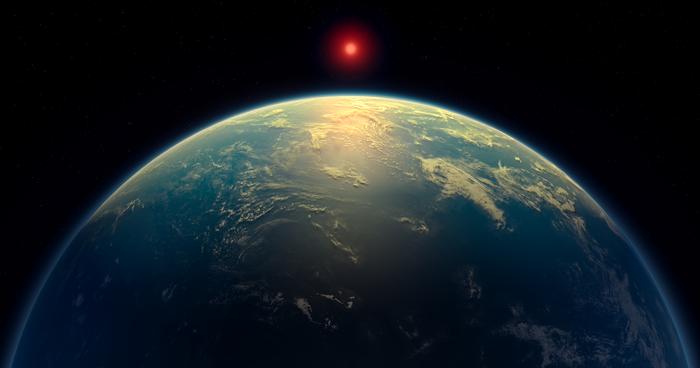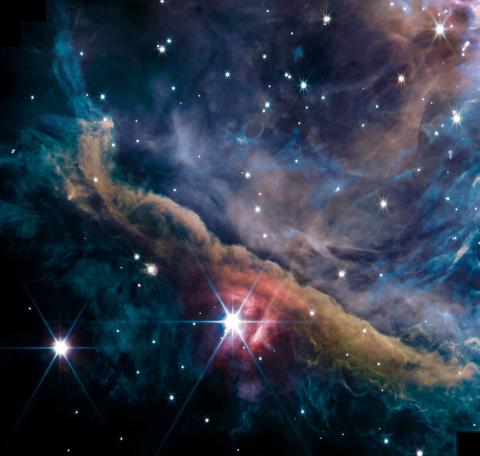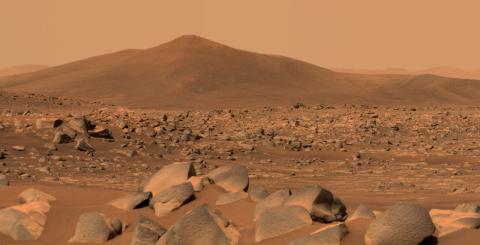Study finds three sigma probability of biological activity outside our solar system
Using data from the James Webb Space Telescope (JWST), a group of astronomers has detected the chemical fingerprints of dimethyl sulfide (DMS) and dimethyl disulfide (DMDS) in the atmosphere of exoplanet K2-18b, which orbits its star in the habitable zone. The detection has been published in The Astrophysical Journal Letters.

David Clements - ET
David Clements
Astrophysicist, Imperial College London.
This is really interesting stuff and, while it does not yet represent a clear detection of Dimethyl Sulfide and Dimethyl Disulfide, it is a step in the right direction.
To get to a solid claim for the existence of life on this planet we’d need to have a solid detection, >5 sigma, a clear demonstration that this is a biomarker and not some other molecular species masquerading as a biomarker, and then a clear understanding that there is no non-biological way of producing the biomarker molecule in the amount seen. Planetary atmospheres are complicated and difficult to understand, especially with the limited information we get from a planet 124 light years away, so there will almost always be some provisos and uncertainties about interpretation, but more and better data will help, and the first step is getting a detection to >5 sigma so that we can be sure that something interesting is there.
Stephen Burgess - ET
Stephen Burgess
Statistician, University of Cambridge
Most scientific experiments have some element of uncertainty. This could be sampling uncertainty – maybe we only have a small number of observations. Or it could be measurement error – maybe our measurements are noisy. If we picked 5 random men and 5 random women from the street, sometimes we will find that the men are taller on average than the women, but occasionally we will find that the women are taller on average than the men. If we want to conclude that men are typically taller than women, we need to collect enough data to be confident that the differences we observe are genuine differences, and not just chance fluctuations. The more data that we collect, the more certain we can be of this. “Three-sigma” is a threshold saying that differences observed in the experiment are sufficiently notable that we can exclude the possibility of a chance finding except in rare cases – equivalent in rarity to tossing a coin 10 times and getting the same result each time. “Five-sigma” is a stricter threshold – equivalent to tossing a coin 20 times in a row and getting the same result each time. It’s still possible that we were simply lucky – and the more data that we look at, the greater the chances of making an observation that is purely a chance finding. But a five-sigma finding is one that would only arise purely by chance exceptionally rarely, and so we can be very confident that this observation isn’t just a chance finding. A separate question to uncertainty is bias – it is possible that there is some flaw with the experiment. This is not something that can be ruled out by statistics. A “five-sigma” finding is therefore exceptionally unlikely to arise due to chance alone: it is either a true result or an experimental error.
"I am employed at the same university as the lead author of this paper. However, I do not know them personally or professionally."
Carlos Briones - ET
Carlos Briones
PhD in Biochemistry and Molecular Biology, CSIC research scientist at the Center for Astrobiology (CSIC-INTA), where he leads a group researching the origin of life and the development of biosensors, and science communicator.
The exoplanet K2-18b orbits a red dwarf located 124 light-years away from us, in the constellation Leo. It has a diameter 2.6 times that of Earth and a mass 8.6 times greater. It is especially interesting to astronomers and astrobiologists because it is rocky, has an atmosphere, and its temperature could allow liquid water to exist on the surface. Therefore, this “super-Earth” is considered potentially habitable and has in fact become one of the best candidates in the search for life beyond the Solar System.
In 2019, using NASA’s Hubble Space Telescope (HST), a very significant discovery was made: its atmosphere contains water vapor. Because of this, that gaseous layer surrounding K2-18b became the target of research by different scientific teams from 2023 onward, thanks to the extraordinary capabilities of the James Webb Space Telescope (JWST, from NASA, ESA, and the Canadian Space Agency).
Thus, the presence of approximately 1% methane (CH4) and 1% carbon dioxide (CO2) was detected in the atmosphere of this planet, which is clearly dominated by hydrogen (H2). In addition, the possible presence of traces of a molecule called dimethyl sulfide (DMS, with the formula CH3-S-CH3) was discovered. This attracted strong attention because on our planet this gas is produced by living beings, including some that make up marine phytoplankton. That molecule contributes to the characteristic “sea smell” enjoyed on the coast, but at higher concentrations it is responsible for the unpleasant odor of boiled cabbage.
Quickly, on social media and in some news outlets, we began to read that “life had been found” on that distant planet. The JWST team themselves, of course, had to deny it.
And now we are living through this situation again, because new data obtained with the JWST’s MIRI spectrograph and published today confirm the presence of DMS and dimethyldisulfide –DMDS, a molecule with one additional sulfur atom– in the atmosphere of K2-18b, where it would be at least 20 times more concentrated than in ours. Since this gas breaks down quickly, such a concentration could suggest that there is a source constantly producing it. As often happens, the scientists who authored this interesting paper are more cautious than those amplifying it outside the academic sphere.
In fact, in October of last year it was published that DMS can also be synthesized abiotically in laboratories, through photochemical reactions and without the involvement of living beings. Moreover, ESA’s Rosetta mission had already found this molecule in the coma of comet 67P/Churyumov–Gerasimenko, and recently my colleagues at the Center for Astrobiology published its detection in interstellar space, specifically in the molecular cloud G+0.693-0.027 located near the center of our galaxy.
Therefore, it is clear that DMS can be synthesized by cosmic chemistry, without any biological process being involved in its origin. That is to say, this compound is not a true biomarker, which in astrobiology we define as a molecule that can only be produced by the metabolism of living beings. Perhaps the atmosphere of the planet K2-18b smells like boiled cabbage, but that does not mean there is life on that distant world.
It is evident that both scientists and the general public hope for news about the detection of other living beings beyond this blue marble. We would like not to be alone in the universe. But we must be cautious and patient. When –these days or in the future– we read headlines claiming that life has been found beyond Earth, let us remember what the philosopher David Hume and the physicist and mathematician Pierre-Simon Laplace already told us back in the 18th century: “extraordinary claims require extraordinary evidence.”
- Letter
- Peer reviewed



